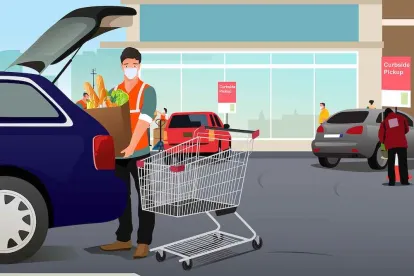On January 25, 2021, the Seattle City Council approved Council Bill 119990 (also referred to as the “hazard pay ordinance”), which establishes $4 per hour COVID-19 hazard pay for grocery employees working in the City of Seattle. Below is a chart summarizing the key provisions of the hazard pay ordinance.
| Effective Date | The ordinance will be take effect immediately upon signature by Seattle mayor Jenny Durkan. Mayor Durkan expects to sign the ordinance on February 3. |
| Sunset Date | According to the City of Seattle’s press release accompanying the ordinance, hazard pay “will be in effect for the duration of the COVID-19 emergency, though Council may reconsider the legislation at the four month mark. This timeframe corresponds with the state department of health’s COVID vaccination plan to make vaccines available to all-aged grocery employees by April 2021.” |
| Entitlement to Hazard Pay |
Covered employers must pay $4 per hour hazard pay for each hour worked in the City of Seattle, and may not reduce employee compensation to offset the temporary hazard pay.
Employers that are already providing bona fide hazard pay may offset the $4 per hour requirement with their existing programs (e.g., an employer already providing $2 per hour hazard pay only needs to provide an additional $2 per hour of hazard pay. Employers seeking to utilize offsets may want to closely review the language of the ordinance to ensure compliance. |
| Covered Employees | The ordinance covers nonexempt employees working in the City of Seattle for a “grocery business.” The ordinance does not apply to gig workers. |
| Covered Employers—500-Employee Threshold |
The ordinance applies to a “grocery business” (defined below) employing “500 or more employees worldwide regardless of where those employees are employed.”
The 500-employee threshold includes virtually all persons working for the company, including exempt, nonexempt, full-time, and part-time employees. Employers may want to review the ordinance for details on calculating headcount. |
| Covered Employers—Definition of “Grocery Business” |
Under the ordinance, the definition of “grocery business” includes two types of grocers:
|
| Covered Employers—Excluded Employers | According to the ordinance, a grocery business “does not include convenience stores or food marts primarily engaged in retailing a limited line of goods that generally includes milk, bread, soda, and snacks.” In addition, a grocery business “does not include farmers’ markets.” |
| Effect on Paid Sick Leave | When calculating an employee’s rate of pay under Seattle’s Paid Sick and Safe Time Ordinance, “hazard pay is considered a premium rate and is not included in the employee’s normal hourly compensation.” |
| Required Notices—Wages |
Within 30 days of the ordinance’s effective date, employers must provide a revised wage notice under Seattle Municipal Code subsection 14.20.025.D.The notice must include the employee’s entitlement to hazard pay and indicate whether the employer will be utilizing any offsets.
For payroll purposes, hazard pay must be itemized “separately from payment for wages and other compensation.” |
| Required Notices—Posters |
Also within 30 days of the effective date of the ordinance, employers must post a conspicuous and accessible notice in their employees’ primary language(s), which “provid[es] information on:
Employers can satisfy their notice requirements through electronic means. The City of Seattle did not commit to distributing its own poster regarding the rights created by the hazard pay ordinance. While the city may distribute a poster, it may not be available within 30 days, and employers may want to prepare to distribute their own notices. |
| Recordkeeping | According to the ordinance, employers must keep records of hazard payments for three years. Without records, the City of Seattle will impose a rebuttable presumption that “the employer violated the ordinance for the periods and for each employee for whom records were not retained.” |




 />i
/>i
